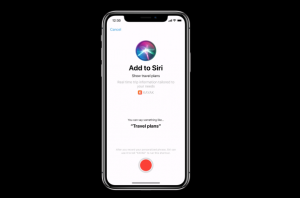Spherical video was briefly popularized during the heyday of mobile-friendly VR (Daydream and Samsung’s Gear VR etc.), and as with phone-based VR, the technology soon hit a plateau with consumers. Wrangling 360 files was hard, viewing them in any meaningful way was even harder. You don’t need to be a famous director to record a cool video with your phone (or GoPro). But with the 360 format (and Fusion in particular), you had to contend with stitching, where to hold or mount the camera, how to move with it and how to edit the whole mess afterward.
GoPro’s Max doesn’t slay all of these problems, but it gently persuades you to forget about some of them. It encourages you to think of it as a camera that catches everything, freeing you up to be a bit more in the moment. Of course, this is still a GoPro, so action and adventure are at its heart. But this time around it’s more of an advanced GoPro for creators that wanna get funky.
As a reminder, the Max is the spiritual successor to the Fusion but has many key differences. First of all, it’s smaller, by about half an inch on its two longest sides. Second, it has a full-color 1.7-inch touchscreen for viewfinding, menu navigation and media playback. The audio has been improved with true-spherical audio (the Fusion was 2D/circular) which can be “focused” in certain directions — think vloggers recording their voice while the front camera records a scene. There’s now only one SD card (hooray) to contend with, and the stitching is done on the camera, not in software (also hooray). Oh, and there’s a “Hero” mode so you can use it like a regular ole GoPro, which we’ll be talking about a lot.
Fusion was, fairly literally, two GoPros in one case. Max is one camera with two lenses. The result is a lot less leg work (like not having to export files from two SD cards), and a whole host of other usability tweaks. In practice, this makes the Max a much less daunting, much smaller and cheaper proposition. Though it’s not without some quirks.
Before we get to those, though, there are a few other hardware changes to point out. The first is something we saw debut in the Hero 8: built-in, foldable mounting fingers. The Fusion had the mounting fingers built-in too, but now they fold neatly into the base of the camera. On the Max, there’s a new battery door, which normally I wouldn’t mention, but this one kept popping off if I opened it too enthusiastically. Not a huge problem, but a minor annoyance clipping it back on.
Once again, there are two lenses and neither is protected by a glass cover — unlike the Hero line. You will have rubber caps to protect them when it’s turned off, and there are protective plastic caps to keep them safe while in use, but there’s possibly a small trade-off in clarity.
Hero mode
Perhaps the simplest difference between Fusion and Max, is that the Max can be used as a regular GoPro right out of the box. Fusion always shot in 360 mode, and you then “punched out” a flat video or photo after the fact. With Hero mode on the Max, you simply press a button on the screen, and it’ll shoot regular (non-360) video, photos or TimeWarps.
And yes, you can choose which camera to use (front or back) via an on-screen toggle. Right now, you can’t toggle between the two while recording, but GoPro tells me this is a feature it’s considering, albeit with no immediate timeline.
While Hero mode instantly makes the Max more practical and versatile, know that there are some limitations. There are also some perks, so your specific needs will determine which outweighs the other.
The main limitation in Hero mode, compared to a regular GoPro, is that there are far fewer shooting modes. There’s no 4K at all, no 2.7K and no real slo-mo to speak of, though it’ll shoot up to 60fps in most modes. Basically you have either 1080p or 1440p (4:3) at 60, 30 or 24 frames per second, and that’s your lot.
Similarly, there’s no “burst” mode for photos or any photo night modes, or LiveBurst (new to the Hero 8). TimeWarp is here, and so is regular TimeLapse, but there’s no night lapse (or any of the night modes at all).
But what about the good stuff? Well, the Hero 8 came with HyperSmooth 2.0, which was GoPro’s improved on-camera stabilization. With the Max we have “Max HyperSmooth,” which theoretically is even better. You might be shooting in “Hero” mode, but thanks to the camera’s all-seeing-eyes, it can use that broader field of view to provide a lot more headroom for stabilization buffering. Note that the Hero 8 has four different tiers of stability (off, on, HyperSmooth 2.0 and Boost). The Max only has two options: off, or Max.
Another trick you can do with the Max that you can’t with a regular GoPro (or phone camera) is
“Power Pano.” In short, you can grab a 270-degree photo panorama with a single click. No more gingerly moving your phone left-to-right to capture that vista (and have it ruined by a moving object). With Power Pano, simply grab it in one go like a regular photo.
The last two features to get a “Max” upgrade are TimeWarp and horizon leveling. Now, you can move the view of your TimeWarp around over time (like you were moving your head as you walk) after the fact. You can also apply horizon leveling at the time of capture, instead of after the fact in the app. Horizon leveling is also much more capable than on the Hero 8. In fact, you can rotate the camera 360-degrees as you record, and the horizon won’t move at all. I imagine a snowboarder pulling a corkscrew, yet the horizon doesn’t move, only the rider does. Needless to say, it’s a solid feature and baked right into the menu this time.
Max HyperSmooth
When I recently reviewed the Hero 8, one of the best updates was the new and improved HyperSmooth stabilization. It took the Hero 7’s already-impressive feature, and ratcheted it up a few notches. On Max, it’s even better again — thanks to that extra buffering available to each 180-degree lens.
In my testing, I pitted the Hero 8 in “Boost” mode (the most stabilization) against the Max’s stabilization, which GoPro has frustrated writers by calling Max HyperSmooth. Boost on the Hero 8 is weirdly smooth, as I noted in my review and is therefore not well suited to all activities, in my opinion. So it feels a little counterintuitive for me to say that Max’s Max HyperSmooth is smoother again (GoPro, see what you’re making us write), yet it feels more suitable for action shots. There’s something about how it handles leans and turns and other anatomical movements that seems a bit more natural — and it doesn’t appear to be cropping like the Hero 8.
In 360 mode, all clips are stabilized by default (aka, there’s no option to turn it off). I’m not sure why you’d want to, either, but there’s going to someone somewhere with a reason. Anyway, know that video, even in spherical mode, is adequately stabilized too.
Max Time (and space) Warp
TimeWarp was new to GoPro for the Hero 7. It was fun, worked pretty well, and that was that. With the Hero 8, GoPro made it better by using the camera’s sensors to automatically adjust the speed of the video. In Max, it works a little differently, depending on what mode you’re in.
In Hero mode, TimeWarp works the same as in the Hero 8. You can choose your speed increase rate (10x, 5x and so on), or let the camera figure it out for you. But you’re stuck with the view of whatever you were pointing the camera at while you record. In 360 mode, however, you have a little more flexibility, and can “move” the camera around to focus on anywhere you like after the fact, making your TimeWarps all the more dynamic and interesting. The one trade-off is that you can’t use “auto” mode here. So you’re back to picking a speed manually and hoping it delivers. I will say though, that the trade-off might be worth it. TimeWarps can easily be ruined by having the camera pointing slightly off-center as you walk. With Max, you can keep it locked right in front of you, or conversely pan around for effect.






